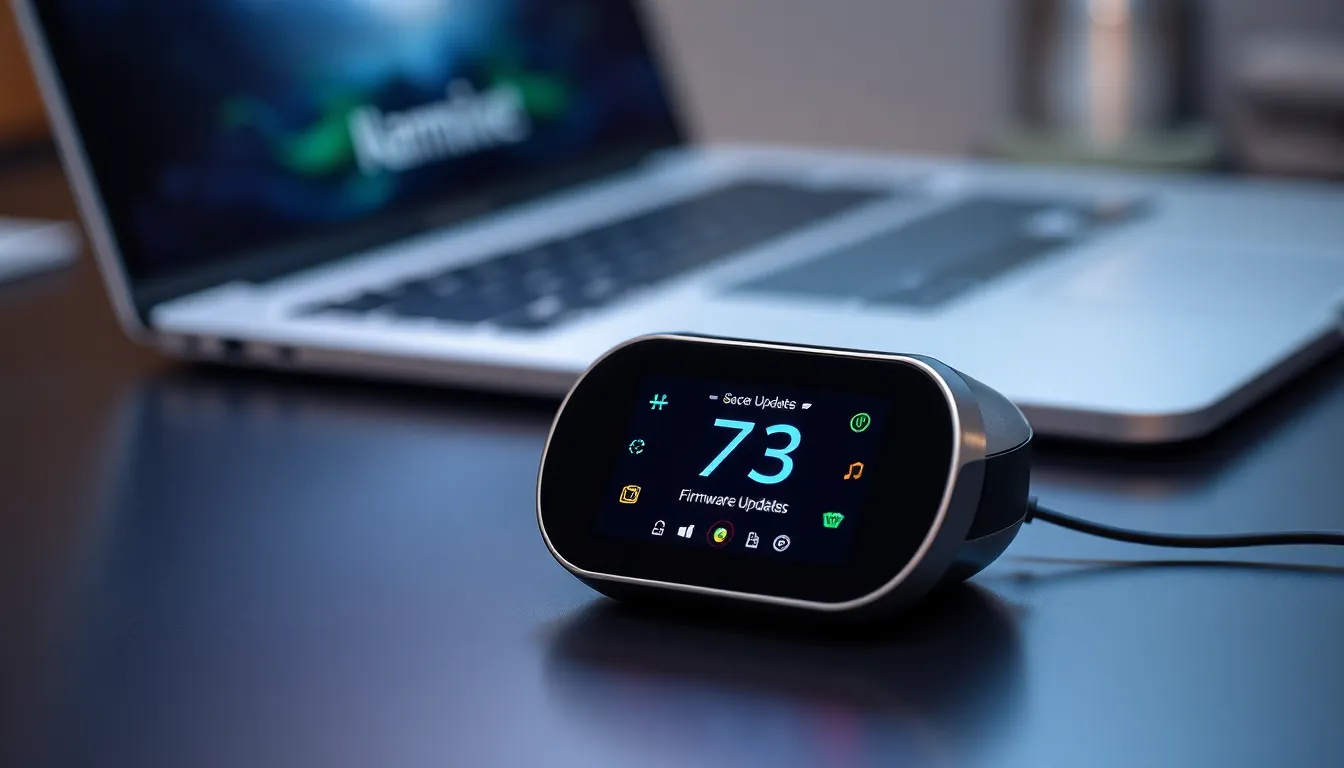In an increasingly connected world, the Internet of Things (IoT) is transforming everyday devices into smart, interactive tools. As these devices proliferate, ensuring their security and functionality becomes paramount. IoT firmware updates play a crucial role in this ecosystem, providing essential enhancements and protections against vulnerabilities.
These updates not only improve device performance but also extend their lifespan, making them more resilient to cyber threats. As manufacturers prioritize user safety and experience, understanding the importance of timely firmware updates is vital for both consumers and businesses alike. Embracing this knowledge can lead to smarter, safer IoT deployments that stand the test of time.
Table of Contents
ToggleOverview of IoT Firmware Updates
IoT firmware updates involve the process of modifying or upgrading the software that controls IoT devices. These updates address various aspects, including performance enhancements, security patches, and feature additions. Manufacturers regularly release firmware updates to improve device functionality and fix identified vulnerabilities.
IoT devices require seamless updates to ensure optimal operation. Many updates introduce advancements like improved user interfaces, energy efficiency enhancements, or compatibility with new technologies. Regular updates prevent obsolescence and enhance the value of devices over time.
Security remains a primary focus of IoT firmware updates. As cyber threats evolve, timely updates protect devices from potential attacks. Protecting against unauthorized access requires manufacturers to stay vigilant and proactive in offering timely security patches.
Consumers and businesses benefit from understanding the update process. Regularly scheduled updates ensure ongoing device performance and security. Awareness fosters better management strategies, enabling users to take advantage of the latest improvements.
IoT firmware updates play a crucial role in device management and security, providing essential improvements for both users and manufacturers.
Importance of Regular Firmware Updates

Regular firmware updates play a crucial role in maintaining IoT device security and performance. These updates address vulnerabilities and enhance overall functionality, ensuring devices operate efficiently in a rapidly evolving technological landscape.
Security Enhancements
Security enhancements delivered through firmware updates defend against emerging threats. Manufacturers swiftly respond to identified vulnerabilities by releasing patches that fortify device security. Updated firmware can mitigate risks such as unauthorized access or data breaches. Timely installation of these updates helps maintain compliance with industry regulations and protects sensitive information.
Performance Improvements
Performance improvements also result from regular firmware updates. These updates optimize the device’s efficiency and address any operational issues that may arise. Improved resource management and energy efficiency often stem from firmware updates, leading to prolonged device lifespan. Additionally, manufacturers frequently introduce new features that enhance user experience, making devices more versatile and user-friendly.
Challenges in Implementing Firmware Updates
Implementing firmware updates in IoT devices presents several challenges that can hinder their effectiveness and deployment. Connectivity issues and device compatibility remain significant hurdles.
Connectivity Issues
Connectivity challenges frequently arise during firmware updates due to unreliable internet connections or poor network coverage. IoT devices, often situated in remote locations, may experience interruptions when attempting to download updates. Inconsistent connectivity can lead to incomplete installations or failed updates, exposing devices to security vulnerabilities. Manufacturers must develop robust update mechanisms that can resume interrupted downloads, ensuring successful installations regardless of varying network conditions.
Device Compatibility
Device compatibility poses another critical challenge for firmware updates in IoT ecosystems. Diverse hardware configurations and operating systems among devices can result in update failures if the firmware is not universally compatible. Older devices often lack processing power or memory required for new features, making them incapable of supporting the latest firmware advancements. It’s essential for manufacturers to establish clear guidelines regarding compatibility and prioritize backward compatibility to avoid alienating users with outdated technologies. Ensuring updates accommodate a wide range of device specifications helps maintain a cohesive IoT environment.
Best Practices for Managing IoT Firmware Updates
Effective management of IoT firmware updates is vital for security and operational performance. Employing best practices ensures a streamlined and efficient update process.
Automated Update Solutions
Automated update solutions facilitate seamless firmware updates for IoT devices. Automating updates reduces human error and ensures prompt installation of critical patches. Many manufacturers implement over-the-air (OTA) updates, which allow devices to download and install firmware automatically, often during off-peak hours to minimize disruption. Security enhancements resulting from these updates protect devices against emerging threats and bolster overall system integrity.
Testing and Validation
Testing and validation are crucial before deploying firmware updates. Manufacturers should conduct thorough testing on various hardware configurations to confirm compatibility and functionality. Running simulations in controlled environments reveals potential issues, allowing for necessary adjustments prior to release. Post-deployment validation ensures the update operates as intended in real-world scenarios, safeguarding against unexpected failures and maintaining user trust. Ensuring rigorous testing and validation processes minimizes the risk of disruptions and enhances user experience.
Future Trends in IoT Firmware Updates
Advancements in IoT firmware updates continue to reshape the landscape of device management and security. Emerging technologies and practices promise to enhance efficiency and effectiveness in updating processes.
Over-the-Air (OTA) Updates
Over-the-air updates offer significant advantages by enabling wireless firmware installations. These updates allow for remote device management, eliminating the need for physical access. OTA capabilities improve update frequency, ensuring timely security patches. By leveraging this method, manufacturers can address vulnerabilities rapidly. Furthermore, OTA updates facilitate minimal user intervention, reducing operational disruptions and enhancing user experience. As IoT ecosystems expand, the reliance on OTA technology will likely increase, making it a fundamental component of firmware management strategies.
Edge Computing Implications
Edge computing significantly influences IoT firmware updates by shifting processing power closer to data sources. This trend reduces latency and enhances real-time decision-making, allowing for faster deployment of updates. Edge devices can analyze data locally, identifying necessary updates quickly and efficiently. Consequently, they can optimize resource use and minimize bandwidth strain, crucial for environments with limited connectivity. Through edge computing, manufacturers can implement more adaptive update strategies, responding to specific conditions and user needs dynamically. The integration of edge computing into firmware update processes will likely improve device performance and security in various applications.
The significance of IoT firmware updates can’t be overstated. They play a crucial role in enhancing device performance while safeguarding against potential security threats. By prioritizing timely updates users can ensure their devices operate efficiently and remain secure in an ever-evolving technological landscape.
As the IoT continues to grow manufacturers must innovate their update processes to address challenges like connectivity and compatibility. Embracing solutions like over-the-air updates and edge computing will pave the way for seamless firmware management. This proactive approach not only protects devices but also enriches user experiences by integrating new features and improvements.
Ultimately staying informed about IoT firmware updates empowers both consumers and businesses to maximize the benefits of their devices while minimizing risks.



